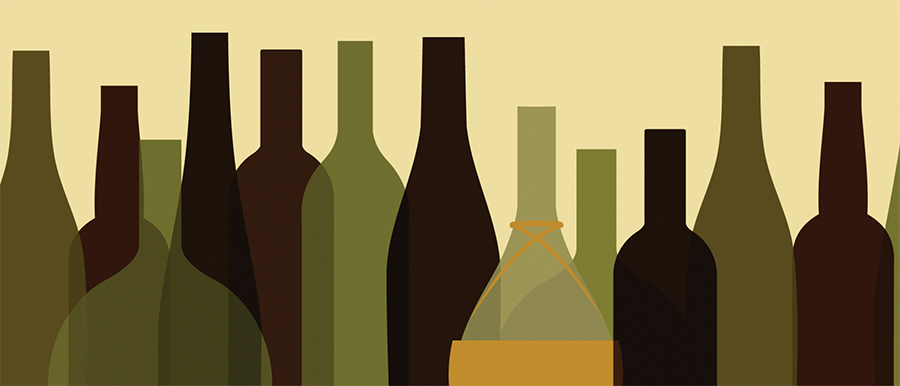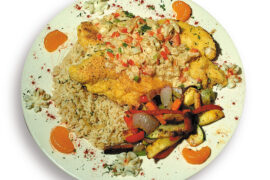By Matthew DeBord
HQ 75 | AUTUMN 2011
In the last issue of Huntington Quarterly, I tackled some reader questions about wine. It was so much fun – and such a great opportunity to educate everyone about the pleasures of the grape – that we decided to do it again!
Q: I’ve heard people raving about French wines. Where is a good starting point if I want to try some?
A: I usually recommend a region of France called the Rhône. The main grape here is Syrah, and the entry-level wine is Côtes du Rhône. These are fairly inexpensive and can be found just about everywhere. They’re rich and delicious, but not as “jammy” as Syrah from, say, Australia (where Syrah is called Shiraz); they are a great introduction to what France is all about. If you can’t find any Côtes du Rhône, look for wines from France that are labeled Merlot, Chardonnay, Pinot Noir and so on. These are usually from southern France’s vast winemaking regions and, while they aren’t all that fancy, are different from their California counterparts.
Q: Virginia is becoming more of a wine destination. What Virginia-made wines are best, and which wineries should I plan to visit?
A: The best-known winery in Virginia is Barboursville Vineyards in Charlottesville. The winery is owned by an Italian conglomerate, and the winemaker is Italian – but the wines are distinctly Virginian. I think the whites are best, particularly the Viognier. The Cabernet Francs are also pretty snappy. Best time to visit? Fall gets my vote – it’s harvest time and that’s when Virginia looks its best. There are other wineries in the area, too, so you can explore the Virginia wine scene without straying too far from Charlottesville, which has its own charms due to the University of Virginia.
Q: I’ve noticed that more and more wines seem to come with twist-off caps rather than corks. If a wine comes with a twist-off cap, does that usually mean it’s a lesser-quality wine?
A: Not at all. In fact, some prominent wineries with a reputation for serious quality are moving to screwcaps because they can’t stand the idea that around 5 percent of their precious – and often pricey – juice is ruined every vintage due to “cork taint.” On balance, the twist-off cap is actually the best closure for wine. Personally, I think First Growth Bordeaux – the most legendary wines on Earth – should make the switch.
Q: What is the difference between “New World” and “Old World?”
A: There are two key differences. The Old World includes wines from Europe: France, Italy, Spain, Portugal. The New World includes wines from the United States, Australia, New Zealand, South Africa, Argentina and Chile. The wines of the Old World are believed to have more nuances, while the wines of the New World boast greater power and fruitiness. This isn’t universally true, but it’s a good place to start.
Q: Why is there such a disparity between the prices of so-called good wines? I sometimes can’t tell the difference between a $10 bottle and a $70 bottle.
A: Sometimes the $10 bottle truly is better. The price of the more expensive wine is really just a sign of how much the winemaking operation has invested in talent, technology, marketing and the quality of the grapes. But winemaking is highly unpredictable, and it doesn’t always work out – and the winery still has to stick to its prices. Obviously, this is good for consumers, who can find great-value wines at low prices. It’s like being Warren Buffett!
Q: Are ratings by Wine Spectator and Wine Advocate reliable? I tend to rely on them for my purchase decisions.
A: Both publications have been at it for so long that they can be considered extremely trustworthy. However, the individual wine critics each have their own preferences. Robert Parker, for example, has always favored robust, full-bodied wines, and some Wine Spectator tasters prefer red wines with a bit more finesse. But if you buy based on the scores, both publications will generally steer you in the right direction.
Q: Are South American wines still a good value? Any suggestions on which wines to purchase?
A: Argentina is terrific. I’d focus on the country’s signature grape, Malbec, and look for wines from Gascon. They are inexpensive and a great introduction.
Q: What is the difference between Champagne and sparkling wine?
A: A wine cannot be called Champagne unless it comes from the Champagne region in France. Most quality sparkling wines are made in basically the same tried-and-true way as Champagne, so no difference there. What is different is the region. The Champagne region of France is not a good place to grow grapes for “still” wines – the ones that don’t have bubbles – so everything for centuries has been concentrated on developing vineyards that can support Champagne. This has led to a wide diversity of styles that make Champagne special – everything from light and elegant to rich and aggressive. Some sparkling wines are catching up in quality, but Champagne is still the king.
Q: How long will a bottle last after being opened?
A: If you recork (or recap – see the question on screwcaps above) and store the bottle in the fridge, it should hold up for a few days. I usually say about three days, by which point the wine’s quality will begin to degrade due to temperature changes and exposure to the air. One solution that has come around as of late is, believe it or not, wine in boxes. The plastic “bladder” inside the box keeps the air out, so (mostly cheap) wines in this category can remain “opened” for weeks.
Q: How long should you decant?
A: It depends. With a fine, older wine, you might want to decant several hours before serving. With a newer wine, a quick decant right before drinking should do the trick. And by the way, be promiscuous about your decanting! Decant everything, including the really cheap stuff, just to see how it affects flavor.





